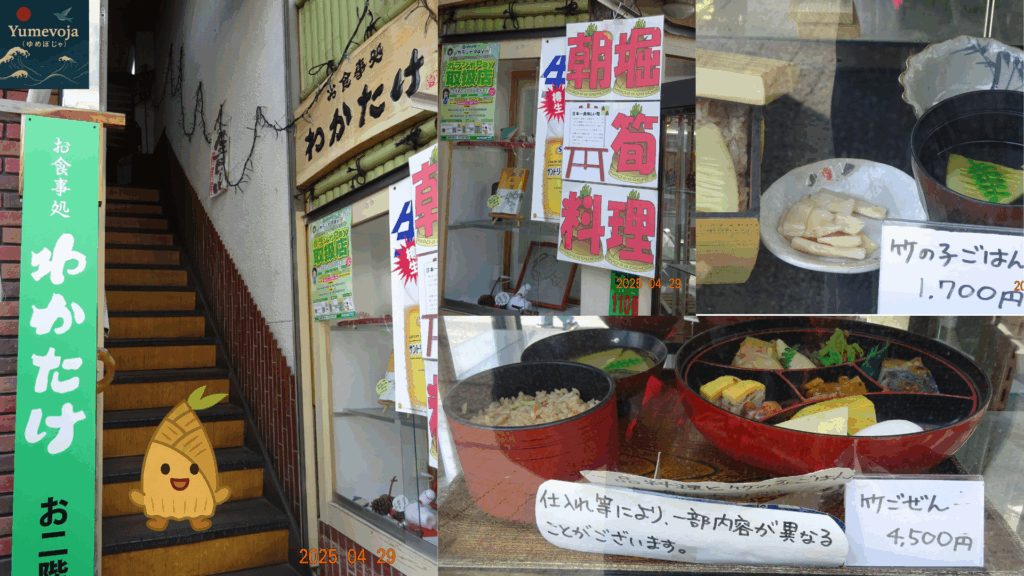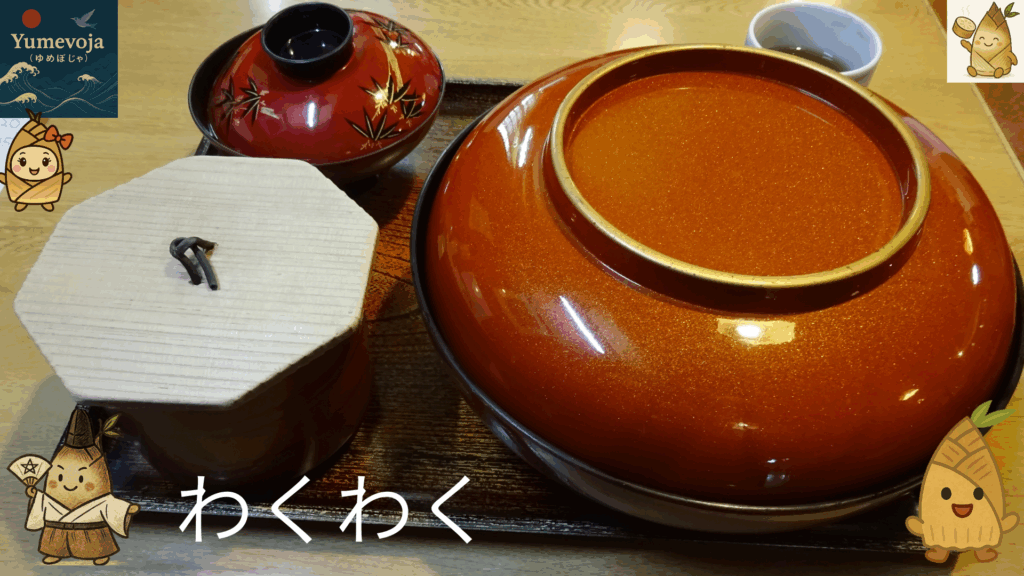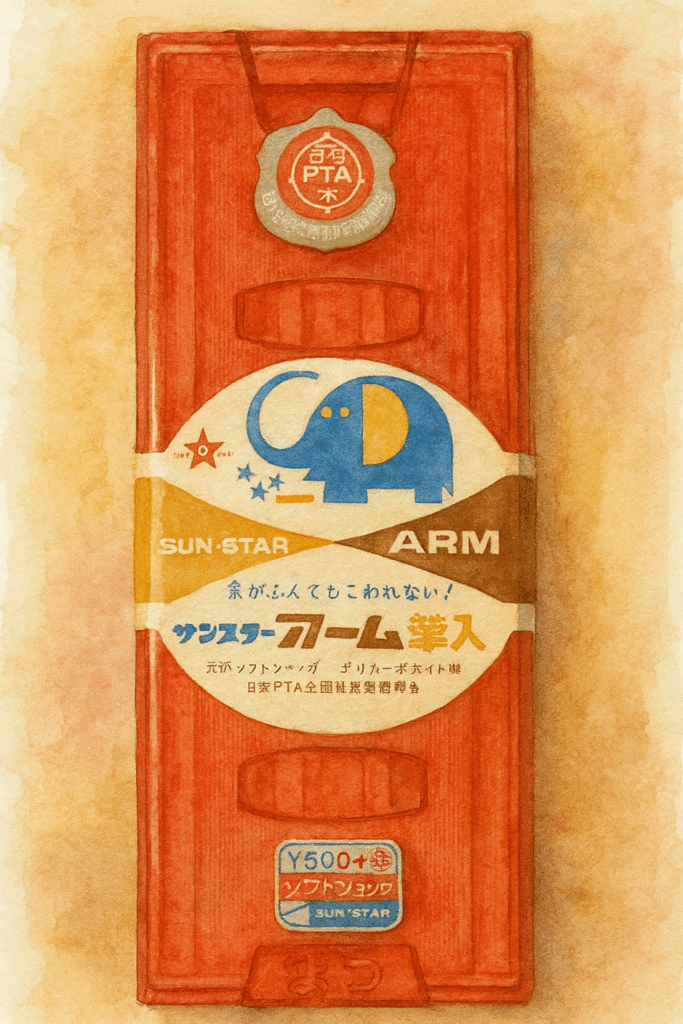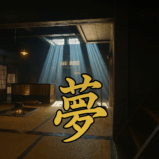Seasonal Indulgence
Visited: April 29, 2025
At Wakatake, a restaurant near Nagaoka Tenjin Station, I enjoyed the spring delicacy known as “Take Gozen” (Bamboo Shoot Set Meal).
The menu listed it simply as “Take Gozen,” but what arrived was far from simple — a lavish course that truly deserved to be called a full Japanese-style “Gozen” feast.
Bamboo shoots harvested in the morning reveal their true charm only when enjoyed the very same day.
The tender parts carry a refined sweetness, while the firmer sections offer a toasty, satisfying bite.
Each element balanced the five basic tastes, creating both a contrast in texture and a harmony of flavor — beautifully presented on the tray.
It was, in every sense, an elegant Kyoto moment.




A Luxurious Meal Worth Its Price
The meal costs 4,500 yen — not exactly inexpensive,
but one look at the photo will tell you how much care went into it.
Each dish seemed to carry the vital energy of spring itself.
Ever since I saw it displayed in the showcase, I couldn’t hide my excitement —
and when the meal finally arrived, it exceeded every expectation.
It was truly a “once-in-spring” dining experience.
About the Restaurant (For Visitors)
The restaurant is just a few minutes’ walk from Hankyu Nagaoka-Tenjin Station.
It’s located on the second floor of an unassuming building,
and the interior still carries the nostalgic charm of Japan’s Showa era.
Rather than a glamorous spot for tourists, it feels warmly local — simple, familiar, and genuine.
The menu changes with the seasons, and “Take Gozen” is not always available.
Its offering depends on the harvest season and supply of bamboo shoots,
so the availability period varies each year.
I had to call several times to check before finally getting the chance to enjoy it.
If you plan to visit, I highly recommend checking with the restaurant in advance.
💭 Something That Made Me Think
As I sat before the meal, I suddenly imagined my future self.
Even after retirement, I still want to enjoy good food — just as I do now.
To make that possible, I’ll take care of my health and keep working as long as I can.
This single meal quietly inspired that positive thought within me.
To enjoy food is to embrace life itself.
The Take Gozen was more than just a meal — it was an experience that filled me with energy for the future.
👉 Related article:
Click to read more:
👉 🚉 Stopover Journey (Osaka – Kyoto) ②/ ④ Nagaoka Tenjin-A Stroll Through History and a Taste of Spring |YUMEVOJA
📎 Related Posts
Click to read more:
👉 🍵Beauty & Taste (Osaka–Kyoto) ①Takatsuki- Udon Gyoza | YUMEVOJA
👉 🍵 Beauty & Taste (Osaka–Kyoto) ② / ③ Nagaoka Tenjin-The Bamboo Shoot Set Meal | YUMEVOJA

Today’s bonus capsule!
✨ Gateway to the Showa Era-he Pencil Case an Elephant Couldn’t Break
The Showa era (1926–1989) was a time when modern technology and ideas began to transform everyday life in Japan.

🕹️ Memories of Showa
“The pencil case that even an elephant couldn’t break”—
that famous catchphrase captured every child’s imagination.
Mine, of course, was that very type.
At school, we used to test its “unbreakable” strength—
dropping it on purpose, even stepping on it for fun.
And indeed, it never broke.
Looking back now, I realize how much craftsmanship and ingenuity
were packed into that one little box.
But thinking of how I treated it then,
I can’t help but feel a bit sorry for my late parents.
📚 Today
Today’s pencil cases come in countless shapes, colors, and designs—
magnetic lids, slim types, characters and patterns of every kind.
Children now choose them as a way to express individuality.
But in the Showa era, the most important thing was durability.
If it was strong and long-lasting, it was trustworthy.
Reliability mattered more than personal style.
Perhaps that was the essence of Japanese craftsmanship—
to create things meant to last, quietly supporting everyday life.
🍱 The Take Gozen at Nagaoka Tenjin
At Nagaoka Tenjin, I was served a beautiful Take Gozen meal,
with seasonal bamboo ingredients gracefully arranged
in lacquerware dishes.
Japanese cuisine values not only flavor but also presentation.
The choice of serving ware changes with the seasons.
Bamboo containers are often used to evoke coolness in summer,
while lacquerware brings elegance and formality to a special meal.
Bamboo represents the strength and lightness of nature.
Lacquer, the warmth and dignity of human craftsmanship.
And that sturdy plastic pencil case—
it was perhaps the “modern bamboo” of the Showa era,
a new kind of strength born from innovation.
💭 Reflection
Today, we live in an age overflowing with things and information.
The more choices we have, the more exhausted our hearts can become.
While individuality and convenience are celebrated,
there are times when I find myself missing the simple modesty of Showa.
When I think of that Take Gozen,
I’m reminded that creative, modern cuisine is wonderful,
but so too is the timeless beauty of traditional Japanese meals
that quietly reflect the changing seasons.
That pencil case, too, was designed to last—
to be used, not replaced.
A culture of keeping and caring, rather than discarding—
perhaps that’s the very value we need to remember today.
🐘🍱
The coolness of bamboo, the shine of lacquer, the lightness of plastic—
different materials, one shared spirit:
a quiet “gentleness that does not break.”
